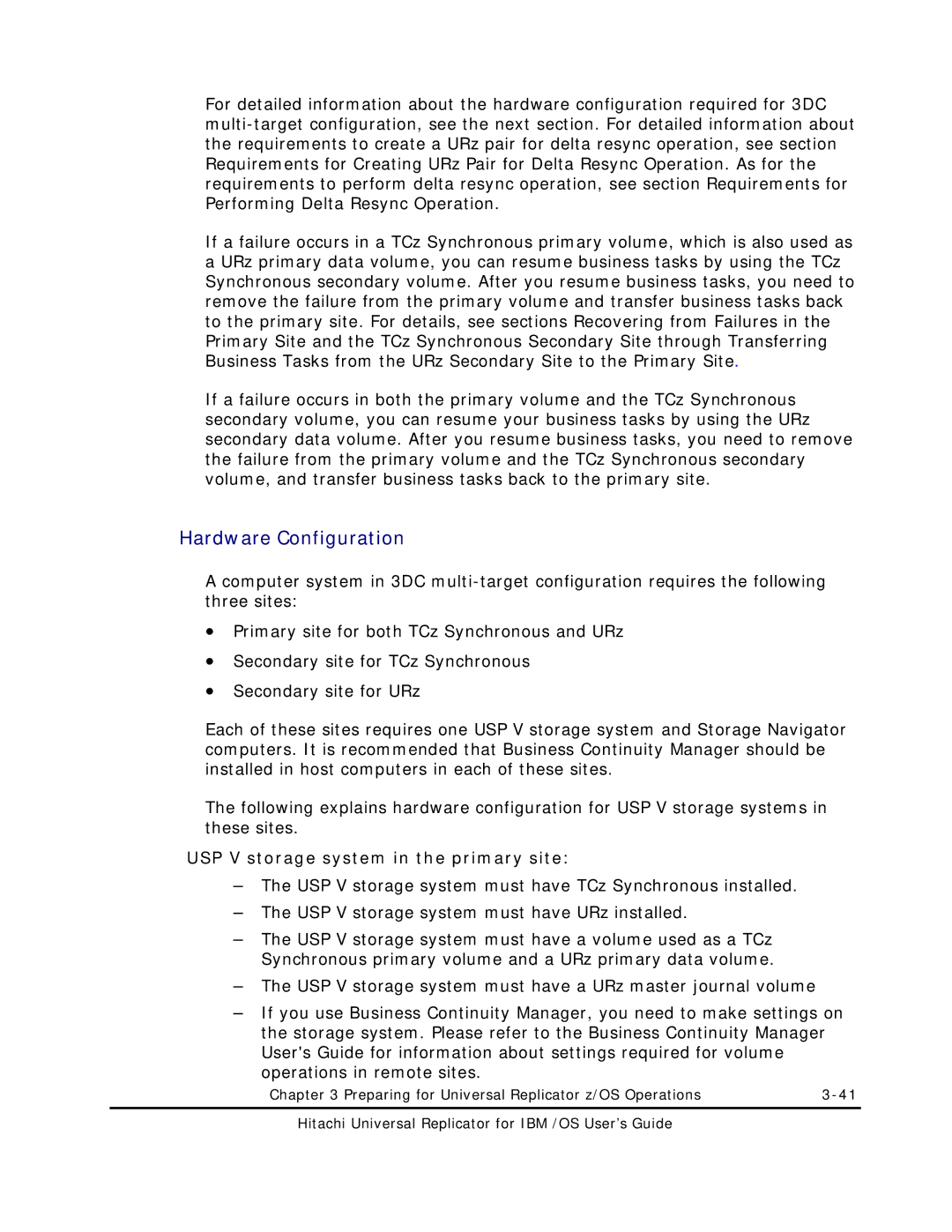For detailed information about the hardware configuration required for 3DC
If a failure occurs in a TCz Synchronous primary volume, which is also used as a URz primary data volume, you can resume business tasks by using the TCz Synchronous secondary volume. After you resume business tasks, you need to remove the failure from the primary volume and transfer business tasks back to the primary site. For details, see sections Recovering from Failures in the Primary Site and the TCz Synchronous Secondary Site through Transferring Business Tasks from the URz Secondary Site to the Primary Site.
If a failure occurs in both the primary volume and the TCz Synchronous secondary volume, you can resume your business tasks by using the URz secondary data volume. After you resume business tasks, you need to remove the failure from the primary volume and the TCz Synchronous secondary volume, and transfer business tasks back to the primary site.
Hardware Configuration
A computer system in 3DC
•Primary site for both TCz Synchronous and URz
•Secondary site for TCz Synchronous
•Secondary site for URz
Each of these sites requires one USP V storage system and Storage Navigator computers. It is recommended that Business Continuity Manager should be installed in host computers in each of these sites.
The following explains hardware configuration for USP V storage systems in these sites.
USP V storage system in the primary site:
–The USP V storage system must have TCz Synchronous installed.
–The USP V storage system must have URz installed.
–The USP V storage system must have a volume used as a TCz Synchronous primary volume and a URz primary data volume.
–The USP V storage system must have a URz master journal volume
–If you use Business Continuity Manager, you need to make settings on the storage system. Please refer to the Business Continuity Manager User's Guide for information about settings required for volume operations in remote sites.
Chapter 3 Preparing for Universal Replicator z/OS Operations |
